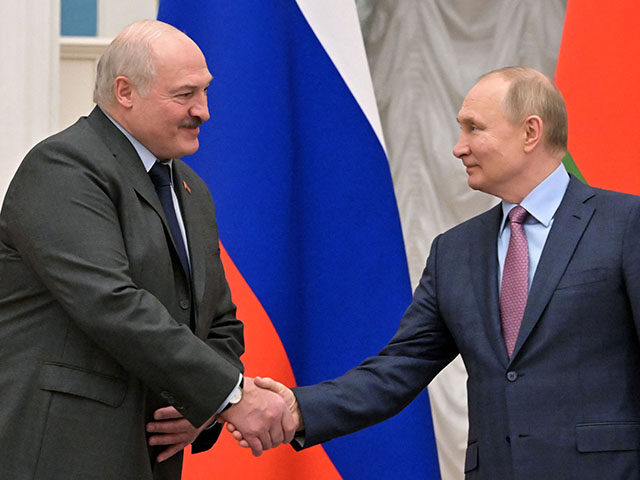Belarusian Defense Minister Lt. Gen. Viktor Khrenin said on Monday that his country’s forces are joining “tactical nuclear weapon deployment” drills ordered by Russian President Vladimir Putin.
Khrenin said the drills would give Belarus an opportunity to “increase our readiness to use so-called retaliatory weapons.”
“Now, more than ever before, we are determined to respond to any threats posed to both our country and the Union State,” he said, referring to the union between Belarus and Russia.
“We have no goal of creating any tension in regional security issues. We do not project relevant military threats on third countries or anyone else. We are a peaceful state, we do not threaten or seek confrontation with anyone, but we will keep our powder dry!” Khrenin said.
Khrenin said joining Russia’s tactical nuclear drills was a reaction to “unsuccessful attempts to drag us into an epidemic of color revolutions and crush us with economic sanctions.”
Putin announced one year ago that Russia was moving some of its “tactical nuclear weapons” to Belarus, ostensibly to deter Western powers that might be “thinking of inflicting a strategic defeat on us.”
Belarusian dictator Alexander Lukashenko said in December that shipments of Russian nuclear weapons had taken place, but he did not specify how many warheads Belarus received, or where they were deployed.
In April 2024, Lukashenko claimed that “several dozen Russian nuclear weapons” have been deployed to Belarus. He added that it would be a “mistake” to assume Belarus gave up all of the warheads stationed on its soil when the Soviet Union collapsed in 1991.
In May, the Russian Defense Ministry announced it would practice “preparation and use of non-strategic nuclear weapons.” The drills were to include land, sea, and air forces, who would practice using nuclear bombs to repel assaults from France, Britain, and the United States.
The Defense Ministry said these drills would be conducted “in response to provocative statements and threats by certain Western officials against the Russian Federation.”
The Kremlin complained about Western powers discussing plans to send NATO forces into Ukraine to repel the Russian invasion, denouncing those plans as a “completely new round of escalation of tension” that “requires special attention and special measures.”
Russian forces conducted the “first stage” of their nuclear drills in late May, involving Iskander and Kinzhal nuclear missiles under the control of the Southern Military District, which borders on Ukraine.
The Iskander is a mobile short-range missile with a range of about 300 miles. The Kinzhal is essentially the air-launched version of the Iskander, although Putin bragged it had been upgraded with unstoppable hypersonic capabilities. The actual performance of the Kinzhal in the Ukraine war has fallen well short of these boasts.
According to the Russian Defense Ministry, last month’s exercises simulated Russian units obtaining “special ammunition,” or nuclear warheads, and secretly mounting them on short-range missiles. The units then practiced “covertly advancing to the designated position in preparation for missile launches.”
“We hope these drills will cool the hot heads in Western capitals,” the Defense Ministry sneered.
Lukashenko ostentatiously ordered a “snap inspection” of tactical nuclear weapons in Belarus the day after Russia conducted stage one of its drills. Khrenin said the inspection involved Iskander missile launchers and nuclear-capable Su-25 warplanes.

COMMENTS
Please let us know if you're having issues with commenting.